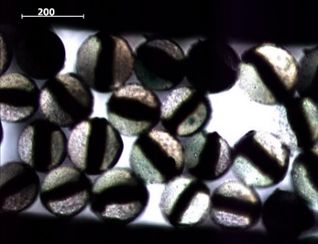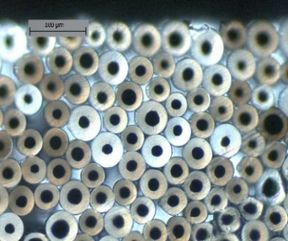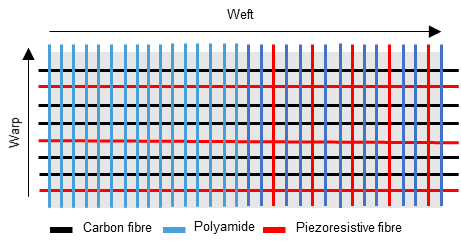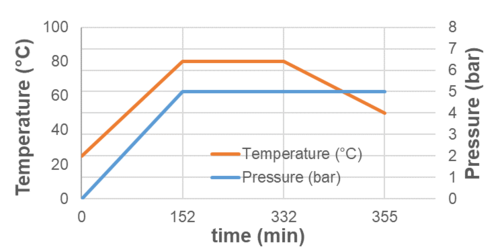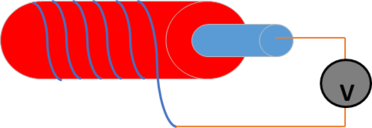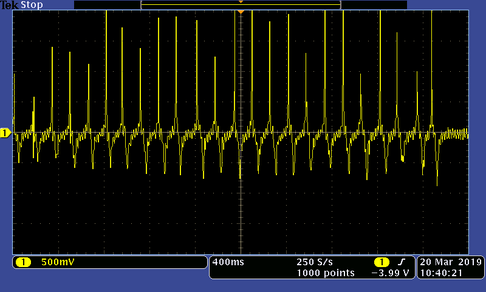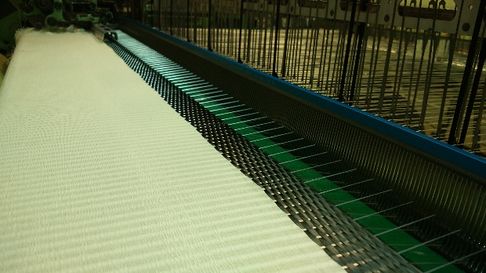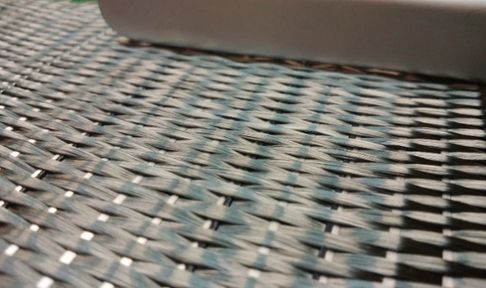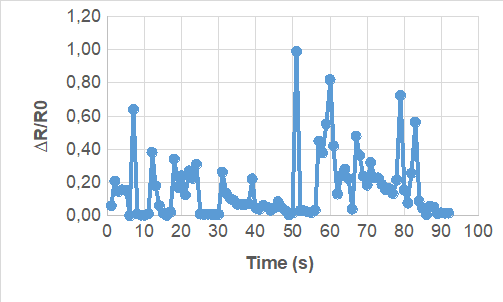1 Introduction
In the last years, the use of textile-based composites has been a trend both in automotive and aeroespacial industries, resulting in products with high specific performance and excellent mechanical properties. Concerning the automotive sector, the development of technical textiles for the production of high performance components is of crucial importance, since through the combination of textile reinforcements with polymeric matrices is possible to obtain composites with outstanding mechanical properties, with a lower impact on the car weight. Moreover, the addaptability of textile reinforced composites in terms of design and production process enables the reduction of car components, leading to more efficient production lines, with reduced cost. In the market there are already some examples of this trend, such as the Lamborghini Gallardo Spyder (UD (unidirectional) fabrics and biaxial NFC (non-crimping fabrics) – reduction of 5 kg and fewer parts (from 9 to 2), BMW i3 NFC composite – reduction of 350 kg), Lexus LFA (braided A-pillar, CFRP, and 3D fabrics), Bentley’s 3D-LightTrans design, reducing 70 % of the time and 45 % of manufacturing cost compared to a conventional composite).
The incorporation of reinforcing materials into polymeric matrices can be performed in the form of particles, flakes, short fibres, continuous fibres, ribbons, textile substractes, among others [1]. For structural applications, continuous fibres are the most commonly used due to the greater reinforcement of the matrix. On the other hand, the matrix is responsible for transmitting the mechanical stresses to the reinforcements, keeping them in position, and contributing with some (usually small) ductility to the composite. This one can be separated in two large groups, namely thermosetting (e.g. epoxy, vinyl ester, benzoxazines) [2]) and thermoplastic (e.g. polyamide, polyether ether ketone, phenylene polyoxide). The thermosetting matrices have high rigidity, high thermal and dimentional stability, resistance to deformation and good thermal and electrical insulation properties. Concerning thermoplastic matrices, they offer high fracture toughness, good impact strenght, good crack propagation resistance, low cost production, easy quality control and recyclability [3].
Regarding fibres, the most used in composites are based on glass, aramid and carbon [4], being carbon fibre the one with a greater impact in the mechanical performance of the final composite, due to its excellent mechanical characteristics in terms of traction, compression and fatigue. Simultaneously, this type of fibres also present high resistance to temperature, good electrical and thermal conductivity and high dimensional stability [5].
Despite the constant search for innovation in textile reinforcement materials for composites, there is still a long way to go in terms of textile structure construction and development, as well as understanding its potential and, above all, its impact in the overall composite performance. Moreover, the development of hybrid textile reinforcement structures combining different fibre typologies has still been little explored in this regard. In fact, the development of a textile structure with both reinforcement and sensing capibilities brings a high innovation factor, since it must be assured that the sensing technologies integrated in the textile reinformecent structure do not affect the mechanical performance of the overall composite. Thus, the application of sensing fibres based in piezoelectric and piezoresistive technology enables the monitorization of mechanical events such as bending, elongation and vibration [6], [7]. Nevertheless, the implementation of this type of sensing fibres in textile reinforcements for composites is still in a preliminary stage and its a complete breaktrough from the current automotive market.
Therefore, the present project focuses, in alignment with the current technological advances, in the development of hybrid and intelligent textile reinforcement structures with sensing elements, allowing the production of composites with both high mechanical performance and structural health monitoring capabilities, resulting in automotive composite structural parts, capable of detecting possible structural failures and the need for part replacement (preventive maintenance of components). In this context, the object of study will be the development of fibres with sensing properties, the development and application of multifunctional sizing formulations to guaranty a strong adhesion between the reinforcing textile and the matrix, and the development of electronic systems (connection hardware, control and communication) and integration/construction processes for the production of the multifunctional textile reinforced composite (textile reinforcement + matrix + electronic components) proposed.
2 Experimental Section
2.1 Production of sensing fibres
In the context of the structural performance monitoring of the composite structure, different functional fibres were developed. Therefore, it were produced both piezoresistive and piezoelectric fibres, with side-by-side and sheath-core geometries, respectively (Figure 1).
Two different piezoresistive yarns were developed with a linear density of 3000 dtex, and draw ratios of R4,3 and R3,3; a tenacity of 1,3 and 1,2 cN/dtex, and elongation of 54 and 98 %, respectively. Each yarn is made of 36 filaments and each filament has a composition of 30 % PP and 70 % of Carbon black based conductive elastomeric compound.
The piezoelectric yarns were produced with a range of linear density between 900 and 1700 dtex, a tenacity range between 1,9 and 2,8 cN/dtex and elongation of 18 up to 30 %. Each piezoelectric yarn is made of 36 filaments and each filament has a composition of 75 % Polyvinylidene fluoride and 25 % of Carbon black based conductive polymeric compound. The piezoelectric fibres were produced at pilot scale, with spinning speeds of 300 m/min, and twisted at 50 turns per meter at 30 m/min.
2.2 Integration of sensorial fibres on textile structure
A basic plain weave structure was produced using commercial Polyamide 6.6 for warp, and a 24K Carbon fibre for weft. During the woven process the piezoresistive fibres were inserted to the warp and weft spaced by 3,5 cm (Figure 2).
2.3 Production of hybrid thermosetting composites
Composite sheets were manufactured by hand lay-up followed by an autoclave curing cycle. For a better fibre impregnation, a low viscosity epoxy resin was used as matrix. Figure 3 shows some pictures of the impregnation process.
Samples were cured 24 hours at room temperature, followed by a post cure cycle in the autoclave. Figure 4 summarizes the conditions used in the autoclave.
Composites based on the produced textile reinforcement weaved structures were obtained. Each structure was manufactured with four variations, which incorporated the piezoresistive yarns. Therefore, four composite laminates were obtained, and the samples were cut for mechanical characterizations.
3 Results
3.1 Piezoresistive fibres
The electrical resistance of piezoresistive fibres (elastomer R4,3 and elastomer R3,3), was measured under cyclic strain, as shown in Figure 5.
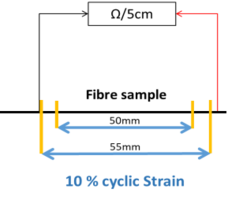
|
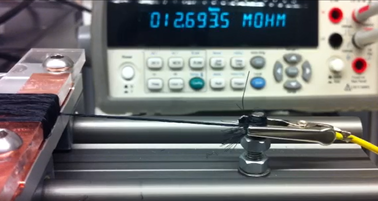
|
A maximum strain variation of 10 % was imposed, and the electrical resistance was measured along the time with a frequency of 0,04 Hz. The next plot shows the collected data.
According to the Figure 6, the filaments show a clear electrical variation under cyclic strain. A higher amplitude of response for a higher draw ratio is observed. The first cycles show hysteresis with tendency to stabilize along the time. This is mainly due to plastic deformation. A thermal treatment is envisaged to stabilize the elastic behaviour and improve the electrical response. Nevertheless, both produced fibres are able to be integrated on textiles structures, acting as fully integrated piezoresistive sensors in composites structures.
3.2 Piezoelectric fibres
The piezoelectric fibres were polarized and characterized in what regards to its performance trough output voltage. The bi-component PVDF fibres were twisted with a 100 micron copper wire acting as outer electrode. In Figure 7 it is possible to see a scheme of the fibre twisting process.
The copper wire was twisted at 150 turns/m. The results of the press and release tests of the fibres, with insulated copper wire as outer electrode, are shown in Figure 8.
The image shown above was achieve by pressing the fibres with a non-conductive object, which explains the differences between the output voltage peaks. The fibres were able to generate a proportional output voltage for the different applied forces. In the future, this behaviour can be used to detect impacts or damages in composite structures under vibration at higher frequencies.
3.3 Sensing fibres integration in the textile reinforcement and thermoset composite production
Following the electrical characterization of all the sensing yarns developed, piezoresistive fibres were the first ones to be integrated in the carbon fibre textile reinforcement structure, as described in section 2.3. The yarns were integrated at warp and weft, being fully compatible with the weaving process applied, as demonstrated in Figure 9.
Concerning the piezoelectric fibres developed, different approaches were considered for the integration of these yarns in the textile reinforcement structure. The first approach included the integration of the piezoelectric yarns without an external electrode (copper yarn or silver ink), taking advantage of the excellent electrical properties of carbon fibre to act as the external electrode. The second approach included the integration of the piezoelectric yarns already twisted with the copper wire, improving the piezoelectric performance. Therefore, the application of both approaches will be a target of future developments.
The first thermoset composites were manufactured with the produced hybrid carbon fibre/polyamide/piezoresistive yarn textile structure, as described in section 2.4. After process optimization in terms of resin application and curing temperatures, it was possible to obtain thermoset composites with the textile extremities accessible, in order to perform the required electrical interconnections with the embedded piezoresistive yarns.
In order to characterize the sensing capabilities of the developed hybrid composites it were performed electrical interconnections with the sensing piezoresistive yarns integrated in the textile reinforcement structure. Therefore, specific mechanical contacts were developed, in order to achieve a robust and efficient electrical connection (Figure 10).
Figure 10. Thermoset composite preparation for the electrical characterization test. a) Thermoset composite with electrical contacts performed to the integrated piezoresistive yarns. b) Electric interconnections required for the monitoring electronics.
Following this step, the hybrid composite with the required electronic interconnections was characterized in terms of compression detection. For this test, the sensing yarns embedded in the composite structure were monitored during compression events, testing both single and repeated mechanical compression (Figure 11).
Through the analysis of Figure 11 is possible to confirm that the produced hybrid composite is able to detect both single and multiple compression cycles. Nevertheless, in both cases it is detected high signal noise that may result from the non-insulation of the side-by-side piezoresistive fibres. Thus, it is possible that the high conductivity of the carbon fibres applied in the textile reinforcement structure is interfering with the electrical performance of the integrated piezoresistive yarns. Therefore, the application of piezoelectric fibres provides a promising approach since it is guaranteed the complete insulation of the fibre, resulting from its sheath-core geometry. For this reason, the next steps for this approach include the characterization of additional mechanical events such as elongation and vibration, as well as the production of new composites with embedded piezoelectric yarns.
Conclusions
The current developments show the high potential of functional fibres to be applied in textile reinforcements for composites, enabling sensing capabilities to the final structure without compromising the composite mechanical performance. In summary, it was demonstrated that the integration of piezoresistive fibres results in functional composites capable of detecting mechanical events, more precisely mechanical compression. Additionally, it was demonstrated the compatibility of the sensing fibres with conventional weaving and composite production processes. Nevertheless, TexBoost PPS3 (AN1/AN2) project is still ongoing, therefore the next steps will involve the production of textile structures with both piezoresistive and piezoelectric fibres integrated in 12K and 100 % carbon fabrics, in order to solve the balance and instability of the textile structure, improving also the overall mechanical performance of the textile reinforcement. Moreover, all the developed hybrid composites will be mechanically and electrically tested, in order to select the most promising textile reinforcement structure and the best type of sensing yarn.
Acknowlegments
The present work is being developed within the scope of the project TexBoost PPS3, which counts with the participation of the entities mentioned below and with the financing of the entities COMPETE 2020, PORTUGAL 2020 and EUROPEAN UNION.
References
| [1] | C. S. Y. Dandekar, “Modeling of machining of composite materials: A review”, Int. J. Mach. Tools Manuf., vol. 57, pp. 102-121, (2012). |
| [2] | B. Z. a. M. S. Yue Liu, “Carbon Fiber Reinforced Polymer for Cable Structures - A review”, Polymers, vol. 7, pp. 2078-2099, (2015). |
| [3] | V. V. Vasiliev, Mechanics of Composites Structures, Taylor & Francis Group, (1993). |
| [4] | D. Brown, “Fibre-reinforced materials”, King´s and st Thomas' Dental Institute, vol. 27, pp. 442-448, (2000). |
| [5] | K. Friedrich and A. A. Almajid, “Manufacturing Aspects of Advanced Polymer Composites for Automotive Applications”, Appl Compos Mater, vol. 20, pp. 107-128, (2013). |
| [6] | S. Nauman, I. Cristian and V. Koncar, “Simultaneous Application of Fibrous Piezoresistive Sensors of Compression and Traction Detection in Glass Laminate Composites”, Sensors, vol. 11, pp. 9478-9498, (2011). |
| [7] | W. Zeng and e. a. Shu, “Fiber-Based Wearable Electronic: A Review of Materials, Fabrication, Devices, and Applications”, Advanced Materials, vol. 26, pp. 5310-5336, (2014). |
Document information
Published on 15/04/21
Accepted on 04/07/19
Submitted on 09/06/19
Volume 05 - Comunicaciones Matcomp19 (2021), Issue Núm. 2 - Caracterización analítica, numérica y experimental de los materiales compuestos. Materiales multifuncionales. Comportamiento de componentes estructurales., 2021
DOI: 10.23967/r.matcomp.2021.04.017
Licence: Other
Share this document
Keywords
claim authorship
Are you one of the authors of this document?
